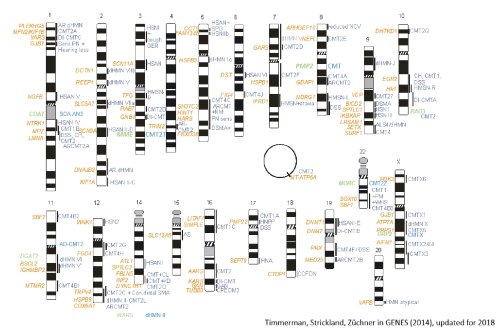Charcot-Marie-Tooth (CMT) disease is a group of slowly progressing peripheral neuropathies. Over 2,5 million people suffer from CMT neuropathy, but most CMT therapeutic studies are in a laboratory or pre-clinical phase, with only one clinical study reaching phase III for the most common form of CMT, type 1A.
There are two main subtypes of CMT disease, CMT1, the demyelinating subtype, and CMT2, the axonal subtype. At the moment, SCREEN4PN is focused on therapies developed for the axonal subtype, CMT2.
Due to the tremendous clinical and genetic heterogeneity characteristic of CMT neuropathy (Fig 1), the development of efficient therapies is a convoluted process.
So far, all therapeutic studies have been performed in small animal models. These animal models mimic one specific gene mutation causing a CMT disease subtype. With over a thousand mutations resulting in CMT neuropathy, creating an animal model for every gene mutation would be impossible.

Fig 1. The current CMT genotypes. Timmerman, Strickland, Züchner in GENES (2014), updated for 2018
The SCREEN4PN platform overcomes these problems by using iPSC technology. We recently demonstrated that iPSC-derived nerve cells from CMT type 2 patients, caused by different gene mutations, share common features. Targeting these common features could allow for the development of a uniform therapy for CMT disease.